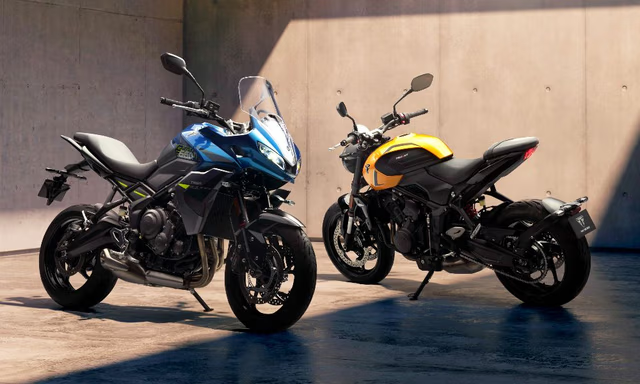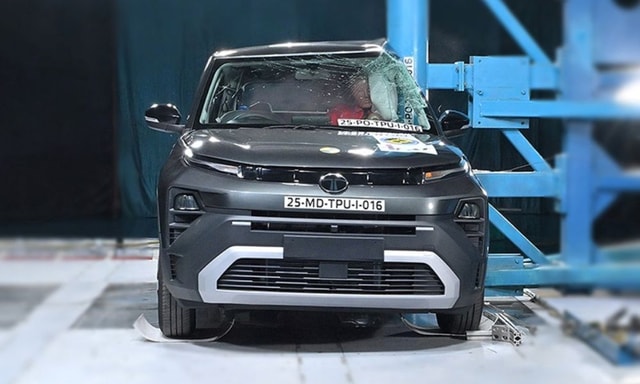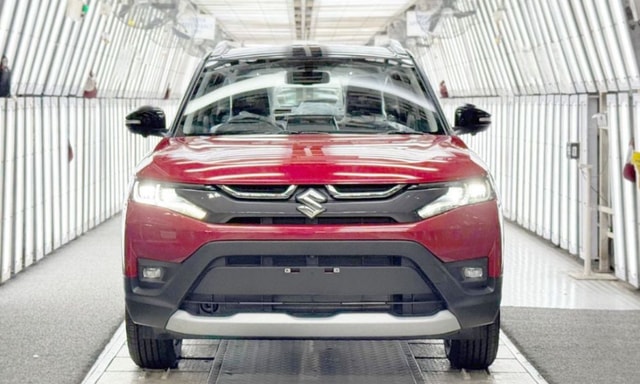Rob Smedley On How F1 Designed 2022 Cars Using AWS

- Smedley revealed AWS was the obvious end-to-end partner for F1
- He revealed how the 2022 F1 cars were conceptualised using AWS
- He also detailed the new Driver Performance graphic
Many F1 fans would remember Rob Smedley as the man who told Felipe Massa," "Fernando (Alonso) is faster than you. Can you confirm you understand that message?," at the 2010 German GP when he was the race engineer for the Brazilian at Ferrari.
Smedley moved to Williams after the Massa changed ship in 2014. And these days he is the technical engineer for F1, the man behind all those cool insights that you get with the help of the AWS in the Formula One broadcast. In his current role, he is the chief technical engineer for F1.
In an exclusive interview for carandbike, Smedley details the partnership with Amazon Web Services (AWS), the unit of Amazon which invented cloud computing in 2002 and till today remains the leading cloud service provider by some marine ahead of biggies like Microsoft's Azure and the Google Cloud.
Why AWS?

The former Williams and Ferrari man is now the chief technical engineer at F1
For Smedley, the partnership was an obvious marriage. It didn't particularly have anything to do with a certain type of technology that AWS brought to the table, but the whole package and the end-to-end synergy between AWS and F1.
"We at Formula 1 have been building our partnership with AWS at many different levels, you know. At an operational level, and even at the strategic level, and we see them as a really key partner because they have the full end to end service. So it's not just about cloud, you know, it's not just about a particular cloud service or, you know, a particular storage solution that we're looking for here. It's an end to end partner. So we want somebody to help us with not only the storage, or the data repository and debate and the low-level architecture, which allows us to get to that data and allows us to access that data because all data is zero value unless you can get to it unless it's accessible, and you can get to it very quickly," explains the 47-year-old Briton.
Smedley reveals that Formula One always had tons of data at its disposal but never had figured out a way to use it in a way to enhance the engagement with fans. AWS helps it to unlock this potential.
"Best in class, analytics, machine learning, data and cloud partner that was going to help us on that journey. So, you know, if you think about it, it's fairly simple. We are at Formula One, the subject matter experts, we understand about the technical aspects of Formula One and the sports and aspects of the sport. Then we needed, you know, technology company like AWS to bring about that horsepower of analytics, you know, cloud compute, high-performance computing, machine learning, AI, all of that stuff, when you have a big data problem, you need a really clear solution to help with that," reveals Smedley explaining the dynamics of the partnership.
AWS and the 2022 F1 cars

The 2022 F1 cars are going to be slicker allowing for more overtaking with new ground-effect aerodynamics
But one of the more interesting things Smedley talked about was the fact that AWS was a key partner in helping Liberty Media develop and conceptualise the cars for the 2022 season. The amount of computing power AWS brings to the table is humongous and that was a capability that Formula One couldn't possibly do in-house. Smedley equates to having a server farm of the size of London to complete some of the computations.
"The next stage is when we're in, like when we were on the 2022 car design was high performance compute. So, you know, what I would call ultra high performance compute, where we're spinning up, at some point up to 7000 cores. Try to do 7000 cores on with on-premise, you know, we would need a server room the size of London, so, of course, you're not going to do that," said Smedley revealing the amount of computational power Formula One had been harnessing for the development of the 2022 cars.
Smedley also touched upon the philosophy behind how the data was used and what insights were showcased to the Formula One fans to keep them engaged. He said that the intent wasn't to predict the end result but to have predictions that showcase the "jeopardy aspect" of the sport which would, in turn, keep the fans engaged and motivated them to keep coming back and watching the broadcast.
"Here's the thing, when we're building all of these complex models, there's an awful lot of information that we're also building and simulating and predicting as Formula One, you know, we must use all of these data insights to engage and to, in a lot of ways increase the jeopardy because Formula One is first and foremost a sport for the fan. And they have to essentially be able to use the data insights, as something which is informative, keeps the engagement level, so we don't want to predict qualifying or the race, or any kind of result before. Before it's actually happened," he says.
Qualifying Predictor
He also gives examples of new insights that keep showing up, for example, the qualifying predictor that comes up at the end of the practice sessions.
" We have a data insight now called qualifying prediction that you'll sometimes see after the practice sessions, if you watch the practice session, today And towards the end of that, you'll see a graphic appear on the screen, which is called qualifying prediction. And what we're doing there is we're taking, it's a very complex model that we've got, but there are lots of different data inputs, like you know, the pure lap times the car model themselves, so the amount of downforce that because of the amount of fuel that the cars have on board, the tyre types that they've got the track improvement, and then we have a model that takes all of that it puts it together. And it looks at some kind of predictive analysis through machine learning," he explains.
Smedley says using data and machine learning all kinds of predictive inputs can be derived, though the philosophy always is to keep the audience engaged and not give him/her some insight that in a way acts like a "spoiler" for the end race result.
"The reality is, is when we put all of the different parameters into a model, then, then we can see that the qualifying prediction looks like this. But we're doing that not to try to give you the qualifying result down to a 10th of accuracy. Absolutely not, we're doing that because we want to engage the fans, we want to say, look, you got to tune in tomorrow, because actually if you look what's going to happen right in front, between Mercedes and Red Bull, you know, we think that there's a 10th of a second between them and up to now this year, we've been pretty much spot on with that. So we're asking you to tune in, and to stay engaged because there's going to be a really close qualifying battle," he said.
Driver Performance

The new driver performance graphic revealed who were the most performant drivers
Smedley has also talked about the new driver performance graphic which we saw first at the French GP. Again AWS is at the core of this feature. This insight revealed, interestingly, Max Verstappen was extracting more from the car than world champion Lewis Hamilton, confirming what many have suspected with the Dutchman being once in a generation talent.
"The modelling starts from reconstructing the tyre forces from the available telemetry signals that we use in in-car camera images (accelerometers, speed sensors, etc). We then fit a parametric tyre model to the data and from this, we can calculate the maximum force that each tyre is capable of generating in all the various car conditions," he says.
But it also looks at the star of the show -- the drivers themselves. This type of insight reveals who is extracting more from the car. Sometimes the car which is at the further end of the pack may have a driver that's extracting more than the driver on the front who has a superior car.
"If driver X at the front of the grid in the best car is able to complete a lap time of 1'30s by extracting 100% of the performance of his car, then if he extracts less than the maximum performance his lap times will be slower. In this simple example, we will say that driver X extracts only 91% of the maximum performance and the result in lap time will be 3 seconds slower resulting in a 1' 33s lap. Now we take driver Y who is in the slowest car on the grid. In this case, driver Y is only able to attain a 1' 32s lap time even when exploiting 100% of the performance of his car. On the other hand, when driver Y exploits only 91% his lap time drops to 1' 35s," he states.
"Let's take an example of the face value qualifying result of drivers X and Y as being lap times of 1'31.1s and 1'32.3s, respectively. If we use a simple linear interpolation of the numbers given above then this would result in the following: Driver X is exploiting his car to 96.7% of the maximum. Driver Y is exploiting his car to 99.1% of the maximum. We would end up with the situation where, at face value, driver Y is 1.2 seconds behind driver X on the grid. But, in reality, the slower driver has exploited his car to a much higher degree (99.1% versus 96.7%)," he succinctly explains in an AWS blog post.
Improvement In Engagement
Smedley was happy to share that the work his team and AWS are doing together is paying dividends as engagement levels have been going up since the beginning of the partnership. He also said that as the relationship develops, there will be more and more that will be showcased as now they are understanding what they can do together.
"We are, undoubtedly seeing better engagement numbers. That is an objectively true statement. With Formula One fans, the fan base is growing all the time. Definitely, we're very, very customer-focused. And I think that that's a really clear part of both AWS and Formula One DNA, we're focused towards what the customer wants. And so you know, we have to, we're always looking for feedback, whether that's good or bad. Overall, the feedback has been positive, about these data insights two years ago, the thirst for the way that the fans are now starting to require these data insights, is growing and growing all the time," he revealed.
Latest News
 Janak Sorap | Jan 21, 20262026 Triumph Trident 660 and Tiger Sport 660 Unveiled; India Launch This YearBased on the setup offered on the Daytona 660, this is the most comprehensive update the Trident and Tiger Sport has received since their introduction.3 mins read
Janak Sorap | Jan 21, 20262026 Triumph Trident 660 and Tiger Sport 660 Unveiled; India Launch This YearBased on the setup offered on the Daytona 660, this is the most comprehensive update the Trident and Tiger Sport has received since their introduction.3 mins read Jaiveer Mehra | Jan 21, 2026New Mercedes-Benz S-Class Previewed Ahead Of Jan 29 Global DebutMercedes says that over 50 per cent of the parts in the upcoming S-class are new, with the car also set to be L4 autonomous driving ready.3 mins read
Jaiveer Mehra | Jan 21, 2026New Mercedes-Benz S-Class Previewed Ahead Of Jan 29 Global DebutMercedes says that over 50 per cent of the parts in the upcoming S-class are new, with the car also set to be L4 autonomous driving ready.3 mins read car&bike Team | Jan 21, 20262026 Jeep Meridian Updated With Sliding Second Row Seats; Prices Start At Rs. 23.33 LakhThe update is limited to select three-row variants of the Jeep Meridian, namely, Limited and Overland.1 min read
car&bike Team | Jan 21, 20262026 Jeep Meridian Updated With Sliding Second Row Seats; Prices Start At Rs. 23.33 LakhThe update is limited to select three-row variants of the Jeep Meridian, namely, Limited and Overland.1 min read Jaiveer Mehra | Jan 21, 2026Skoda Kylaq Classic+, Prestige+ Prices RevealedSkoda has also confirmed a new Sportline variant that will join the lineup later in the year.1 min read
Jaiveer Mehra | Jan 21, 2026Skoda Kylaq Classic+, Prestige+ Prices RevealedSkoda has also confirmed a new Sportline variant that will join the lineup later in the year.1 min read Jaiveer Mehra | Jan 20, 2026Tata Punch Facelift Bharat NCAP Crash Test Scores Revealed; Gets 5-Star RatingFacelifted internal combustion Punch secures 30.58 out of 32 for adult occupant protection and 45 out of 49 for child occupant protection.1 min read
Jaiveer Mehra | Jan 20, 2026Tata Punch Facelift Bharat NCAP Crash Test Scores Revealed; Gets 5-Star RatingFacelifted internal combustion Punch secures 30.58 out of 32 for adult occupant protection and 45 out of 49 for child occupant protection.1 min read Seshan Vijayraghvan | Jan 20, 2026Maruti Suzuki To Invest Rs. 35,000 Crore For Setting Up New Manufacturing Plant In GujaratThe new facility will come up in Khoraj, on 1,750 acres of land provided by Gujarat Industrial Development Corporation (GIDC).2 mins read
Seshan Vijayraghvan | Jan 20, 2026Maruti Suzuki To Invest Rs. 35,000 Crore For Setting Up New Manufacturing Plant In GujaratThe new facility will come up in Khoraj, on 1,750 acres of land provided by Gujarat Industrial Development Corporation (GIDC).2 mins read
 Bilal Firfiray | Jan 21, 2026Tata Punch Facelift Review: New Turbo Engine; Same Old SoulWith the update, the Tata Punch facelift retains its character of being a healthy runabout, which is perfect for Indian roads. But have these changes made it any better?7 mins read
Bilal Firfiray | Jan 21, 2026Tata Punch Facelift Review: New Turbo Engine; Same Old SoulWith the update, the Tata Punch facelift retains its character of being a healthy runabout, which is perfect for Indian roads. But have these changes made it any better?7 mins read Amaan Ahmed | Jan 17, 2026Bajaj Chetak C25 First Ride Review: Basic, Likeable E-Scooter For First-Time RidersThe Chetak C25, in quite a few ways, is poles apart from the larger and more powerful 30 and 35 Series models, but in its mannerisms, it is very much a Chetak.8 mins read
Amaan Ahmed | Jan 17, 2026Bajaj Chetak C25 First Ride Review: Basic, Likeable E-Scooter For First-Time RidersThe Chetak C25, in quite a few ways, is poles apart from the larger and more powerful 30 and 35 Series models, but in its mannerisms, it is very much a Chetak.8 mins read Bilal Firfiray | Jan 9, 2026Toyota Urban Cruiser Hyryder: 10,000 km Long-Term ReviewAfter spending over three months and 10,000 km with the Toyota Urban Cruiser Hyryder Hybrid, we were impressed by its real-world mileage, seamless hybrid, practical comfort, and Toyota reliability. Is it the best C-SUV then?5 mins read
Bilal Firfiray | Jan 9, 2026Toyota Urban Cruiser Hyryder: 10,000 km Long-Term ReviewAfter spending over three months and 10,000 km with the Toyota Urban Cruiser Hyryder Hybrid, we were impressed by its real-world mileage, seamless hybrid, practical comfort, and Toyota reliability. Is it the best C-SUV then?5 mins read Seshan Vijayraghvan | Jan 8, 20262026 Mahindra XUV 7XO Review: Big On Tech, Bigger On ComfortThe new Mahindra XUV 7XO is flashier, feature packed, and comes with more advanced tech. But are the changes just incremental or actually substantial?1 min read
Seshan Vijayraghvan | Jan 8, 20262026 Mahindra XUV 7XO Review: Big On Tech, Bigger On ComfortThe new Mahindra XUV 7XO is flashier, feature packed, and comes with more advanced tech. But are the changes just incremental or actually substantial?1 min read Preetam Bora | Jan 10, 2026Simple One Gen 2 First Ride Review: 265 km Claimed Range!The Gen 2 model of Simple Energy’s first electric scooter gets a fair few updates, including new features, tech, more range and lighter weight. We spent a couple of hours with the Simple One Gen 2 to find out if it manages to impress.6 mins read
Preetam Bora | Jan 10, 2026Simple One Gen 2 First Ride Review: 265 km Claimed Range!The Gen 2 model of Simple Energy’s first electric scooter gets a fair few updates, including new features, tech, more range and lighter weight. We spent a couple of hours with the Simple One Gen 2 to find out if it manages to impress.6 mins read






















































































































